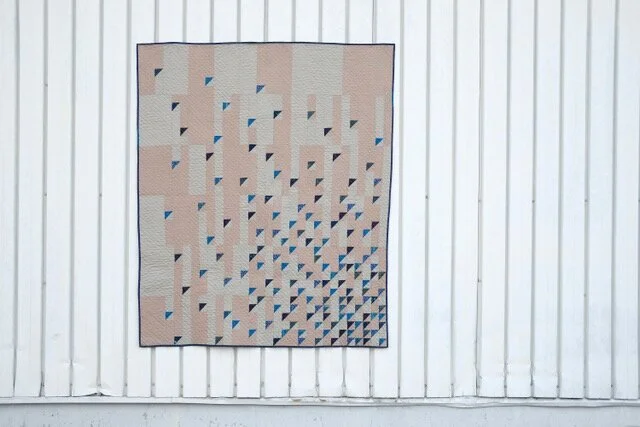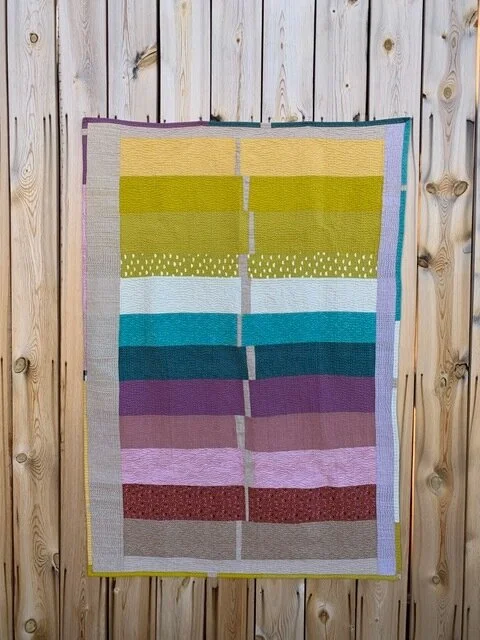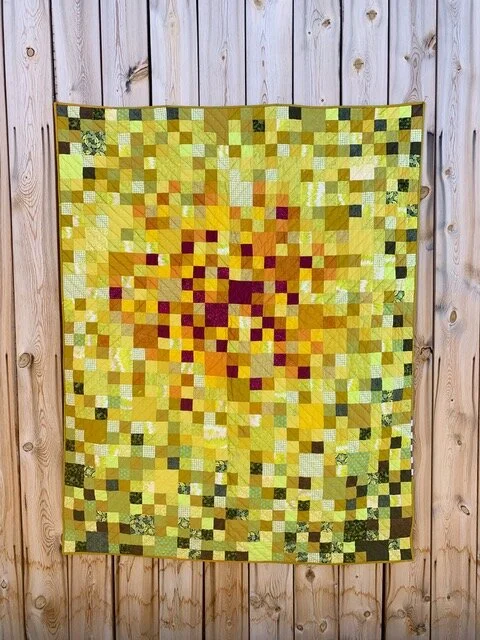Grace Summanen
The ART of IMPROV
I am excited to welcome, another InTandum pARTner, artist Grace Summanen to share with us about her experience with improvisation. I met Grace through a crit group via The Artist Mother Network and thought of her immediately when the idea of getting together to talk about art with a partner was sparked. Her work and openness to the flow of process has inspired me to be open in new ways, what a gift!
Grace, originally from Ashtabula, OH, currently lives and works in Euclid, OH with her husband and three children. Her artwork pushes traditional definitions through material exploration and systematic approaches to abstraction. She works in various media including relief painting, installation, and works on paper. She received her MFA in painting from Kent State University in 2011 and her BFA in painting, drawing, and printmaking from Carnegie Mellon University in 1996. Grace has shown at numerous locations in Northeast Ohio including Abattoir Gallery, Zygote Press, Spaces, Waterloo Arts, and Yard Projects. She has shown nationally in group exhibitions including To See Is To Have: Navigating Today’s Art Ecosystem at the McNay Art Museum in San Antonio, TX; Big Idea at the Painting Center in New York City; and surface/material at the Pittsburgh Center for the Arts. Through teaching, Grace has shared her love of art with students at local universities including the University of Akron, Lake Erie College, and Lakeland Community College.
Wood Waves Grace Summanen
What does working improvisationally mean to you? How would you define the ‘Art of Improv’?
The creative process is about discovery. You must work improvisationally to be open to possibilities. I often have an idea of what I want to do but abandon it once I work with the materials. My process is rooted in material play to see what is possible. It is fundamental to my art practice.
Have you always worked improvisationally?
Yes, I think it is my nature in life. Have a plan but react to what comes.
Do you work improvisationally, consciously, intentionally? If so, how do you begin? If not, how do you find yourself getting there?
As I said above, I have ideas of what I might do, but I usually abandon them while working. It helps me to have structure to react to, but by now I know I am not married to my initial ideas. They are more of a way to start. I think there is both intentionality to my process as well as improvisation. I do consciously evaluate my work, but when I am in the process go with what is working.
T-shirt Mixed Media Grace Summanen
How often do you work with improvisation? My process is a back and forth of intentionality and improvisation. It embodies the elements of yin & yang. Every time I work, I do both.
Please share a bit about your process. Do you have methods to getting started? Do you have tricks to getting unstuck? Do you have motivators to finishing up?
I usually pick materials and see what happens. My initial process is to feed off of the last work. Elements or process I thought could be explored further. I collect materials & surfaces. I prep the surfaces & use latex paint to “glue” material to my support. The first few layers are to transform the material to a hard surface but also to create history. I use dry brush with complementary colors to create contrast. When I get to a point where the work is starting to solidify, I switch to acrylic paint. I think about color and how the workflows. I hate to waste paint so when I am at this point, I will use left-over paint on a work that is unfinished or just beginning. It can help move it along in a direction I had not thought. I usually leave a few days between sessions. I find when I come back a few days later a work I wasn’t sure about is finished, or one I thought I was sure about is not. I don’t know how that works. It seems when we are too close to something we cannot see it. We need distance.
Other motivators are researching other artists. I find Instagram good for this. I see work I like & I get inspired. Having conversations with other artists helps as well. Going to look at work in person at galleries or museums. I teach. When I am into a class, I am often inspired by the students. They keep my head in the game. I don’t worry much about struggling with my work anymore. I do still struggle with it. I just keep working. It always balances out. I don’t have to like all of my work. These are good things to know, even though I still do struggle with them. I also journal to help my mind. I started a gratitude journal a few months ago & am surprised how much it helps. I work on myself to stay inspired. The creative process mirrors the life process. I try to keep this in mind. When my work is going well, I am feeling well.
Where do you find inspiration? How do you use it?
I find my inspiration everywhere. My art practice is connected to my life. There is a video I watched of Richard Tuttle. He said something like “Art is about life. All of life.” That resonated with me. I mentioned some inspirations above under motivation. I am inspired by nature and life. I love to read & look at art. I get really inspired by how some artists use materials. I love the history of art. My students inspire me. I know I lead them, but they don’t know I waver in my convictions. Hearing their reactions to art, inspires me I am on the right path. I have always been interested in science, philosophy, and spirituality. This curiosity about life pushes my art. Art parallels life. Through my work, I am searching for meaning.
Pink Pom Pom Grace Summanen






























